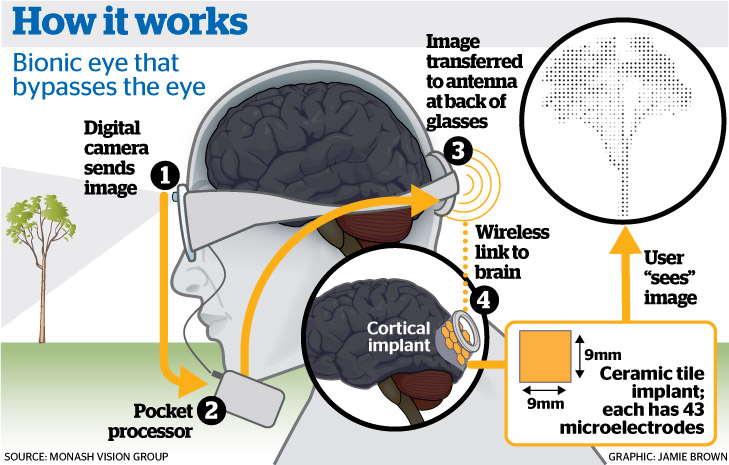Monash University’s Bionic Eye will be trialed in humans next year. The study is being led by Professor Jeffrey V. Rosenfeld.
Patients who have lost their sight will have tiny “ceramic tiles” implanted into their brain’s visual cortex. The device bypasses the normal visual pathway, unlike the other bionic eyes in development, which rely on an implant in the retina.
A glasses mounted digital camera captures images before transferring them to a small vision processing device. Once processed, the image is transferred to an antenna attached to the back of a glasses frame. It is then wirelessly transmitted to the brain, where it is received by the small ceramic tiles implanted during surgery. The tiny tiles, each containing 43 microelectrodes, measure 9mm by 9mm.
WEARABLE TECH + DIGITAL HEALTH NYC 2015 – JUNE 30 @ NEW YORK ACADEMY OF SCIENCES. EARLY REGISTRATION RATE ENDS FRIDAY, 5/15.
